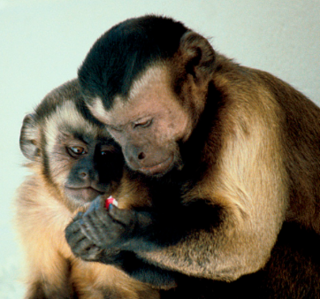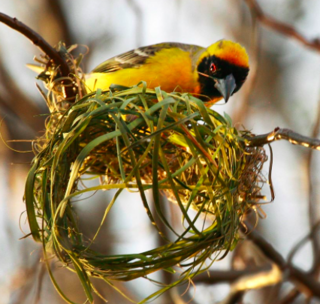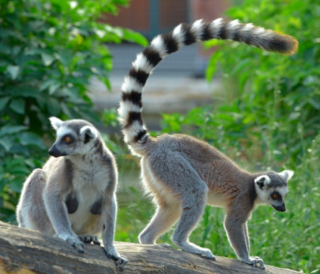Social Learning Theory
In Humans and Animals, Social Learning Drives Intelligence
New research shows that animals learn socially like humans do.
Posted March 26, 2018
The human capacity to learn exceeds that of any other animal. Indeed, our massive memories and impressive computing power are the engines of all that makes us different from other animals, rooted mostly, but not entirely, in language.
However, the way that humans and animals learn may not be as different as many people think.

We all know that humans do most of their learning socially, that is, we learn from others rather than discovering things ourselves through trial-and-error. Formal schooling is entirely based on social learning. Even so-called self-directed learning and discovery is actually social because when we discover information in a book, someone else put it there.
Reading a book may seem like a solitary endeavor, but those are someone else's words on those pages, communicating to us through time and space using the magic of the written word. The truth is that we do not often derive new knowledge from first principles. Instead, we learn what others have discovered and each generation cumulatively adds to the global knowledge base.

Because animals do not go to school, we often think of their learning as entirely different. When we see a bird building a nest, for example, we assume that birds must have a built-in instinct to build nests and then learn to do it through trial-and-error. That may be right, but there may also be a social component to animal learning.
Carel van Schaik and his colleagues at the University of Zurich recently wrote an article in a special edition of the Spanish Journal of Psychology dedicated to "Cognition and Culture in an Evolutionary Contex." In this article, entitled, "The Ecology of Social Learning in Animals and its Link with Intelligence," van Shaik makes the argument that many scientists have been under-appreciating the role of social learning in animals.

Paraphrasing, van Schaik writes that field biologists have long tended to conclude that high-level skills of animals were the product of natural selection and thus largely innate, requiring little learning at all. Comparative psychologists, on the other hand, tend to think more about animal learning, but assume that it mostly happens as an individual endeavor. Anthropologists, on the other hand, tend to think more about how animals might learn things socially. In other words, scientists from the three disciplines that do research on animal learning harbor very different ideas about that learning and often talk right past each other.
As van Schaik puts it, "Those who study animals tend to expect strong genetic foundations and little learning, but where it happens, assume individual learning, whereas those who study humans automatically expect cultural processes to underlie our cognitive abilities."
Fortunately, the question of how animals learn things can be interrogating through careful observation in the field and experiments with captive animals.

It has long been known that most social animals that are reared artificially in captivity will be deficient in many skills that adult animals of that species are generally proficient at. For examples, chimpanzees raised without adult chimpanzees do not know how to build nests or care for young when they become parents themselves. Ring-tailed lemurs raised artificially do not show the "normal" food preferences that wild lemurs display and instead will eat a larger variety of food.
Cross-fostering experiments, in which animals are raised by members of a different species, have also revealed the effects of social learning. For example, Frans de Waal and Denise Johanowicz allowed some young rhesus macaques, which don't normally engage in social reconciliation following a conflict, to spend five months of their young lives with stump-tailed macaques, which are much more prone to reconciling disputes peacefully. These fostered rhesus macaques learned the behavior of reconciliation and it stuck with them even after they were placed back with other rhesus macaques. Surprisingly, this more conciliatory approach to conflict resolution remained even after other habits they had picked up faded.
Two cross-fostering examples in wild animals, one with cockatoos and one with tits, show that birds learn their foraging behaviors from their parents, rather than having an innate knowledge that is shaped through trial-and-error. For example, Galah cockatoos will forage and eat like Mitchell's cockatoos when they are raised by Mitchell's cockatoos and will largely ignore their conspecific fellow Galahs even in adulthood.

In his paper, van Schaik then goes on to describe various modes of learning, including and especially social modes and provides evidence from many bird and mammal species demonstrating that some of the most essential skills for many animals are actually learned socially, rather than individually. For example, while Northwestern Crows may learn to open clamshells on their own, they definitely rely on learning from conspecifics regarding where to find these claims.
The continuing discovery that birds and mammals do a great deal of their learning socially, rather than individually, has important implications for how human intelligence evolved. It is well known that the explosion of innovation and creativity in our lineage began well after our species had adopted our current anatomical form, including brain size, and is largely attributed to the acquisition of language and symbolic thinking around 65,000 years ago. From this point forward, each generation of humans inherited the collected knowledge of the previous generation, which was transmitted socially through language. This steady accumulation of knowledge led to the eventual development of agriculture and everything else flowed from that.
If we consider that our ape ancestors were already learning a great deal from each other, the evolutionary drive toward cognitive capacity was really just a drive for "more of the same." The great conundrum of language and symbolic thought is that humans had to have evolved the capacity for these skills before they were actually used. You can't do something until you have the means to do it. When it comes to language and symbolism and culture, it could be that the means to do it was social learning pure and simple. Over the last seven million years (and even going much further back than that, truth be told), the selective pressure was for increasing sociality, social cooperation, and social learning.
If we view human evolution as a rising tide of social learning, the emergence of language seems almost inevitable.
I further find this probable because it also addresses a lingering paradox of ethology - how can natural selection possibly be the only tool by which animals "learn" very complex skills? Of course, natural selection is involved in shaping anything and everything about us, and of course some animals really do have genetically programmed behaviors that are complex, such as a beaver building a dam, a behavior that appears to be almost completely innate. But we are expecting too much of natural selection to think that all of the complex behaviors we see in animals is the product of pure genetics and "survival of the fittest."
Social learning resolves this conundrum. Animals species didn't have to sit around and wait for random mutation to give them the innate knowledge of where to find food. They learned from their parents and others. The role of evolution, then, was to continually select for better learners, and better social learners specifically, at least in some lineages.
Especially ours. The mutations that made us human with all our impressive abilities are those that made us better social learners. We learned to be human.
References
van Scheick, et al. (2017). Spanish Journal of Psychology. Cambridge University Press.




